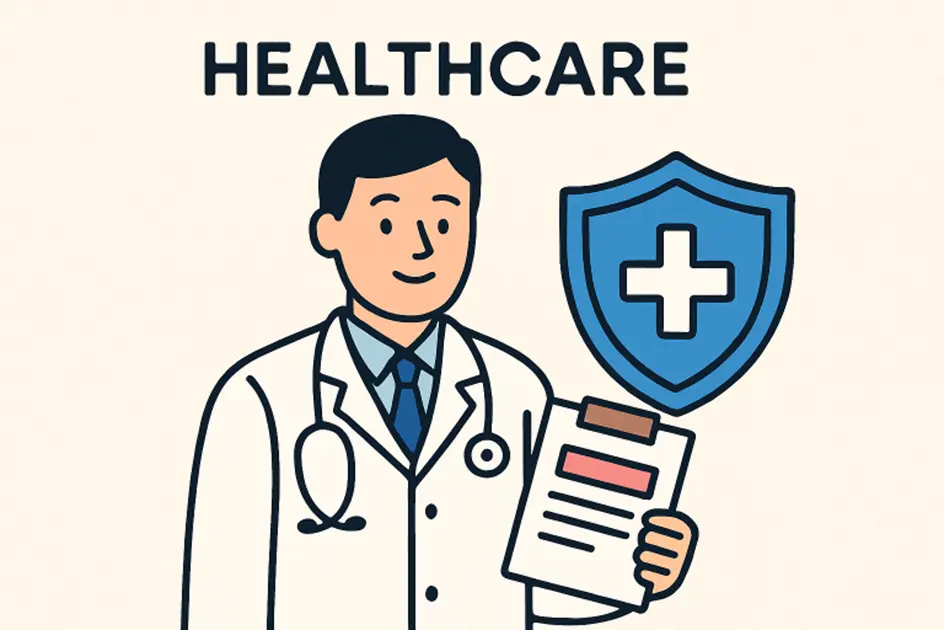Patient Safety Challenges in Healthcare
Modern healthcare presents a series of intricate patient safety challenges that demand constant vigilance from physicians and care teams. The Joint Commission reports that miscommunication among healthcare staff, medication administration errors, and preventable hospital-acquired infections continue to be the leading safety issues. Even seemingly minor procedural lapses can have significant consequences for both patient outcomes and practitioner liability.
These challenges highlight the critical need for well-structured safety practices and proactive risk management. For healthcare professionals, having comprehensive medical malpractice insurance is a foundational layer of protection. Such coverage is crucial in today’s environment, where the pace and complexity of care can increase the likelihood of accidental oversights and subsequent litigation. Implementing regular staff training and staying updated with the latest medical standards are essential steps to mitigate risks effectively. Additionally, fostering a culture of transparency and open communication can help identify and resolve potential issues early, ultimately enhancing patient safety.
Liability Concerns for Healthcare Professionals
Physicians and advanced practitioners are increasingly aware of the legal repercussions associated with medical errors. According to the American Medical Association, almost one in three doctors faces a lawsuit at some point in their career. Liability concerns can arise from clinical ambiguities, patient dissatisfaction, high patient loads, or breakdowns in the continuity of care. Such lawsuits may result in hefty financial penalties, reputational issues, and even career disruptions.
As such, medical professionals must balance the priority of clinical excellence with the realities of potential legal exposure. Consistent safety practices and robust insurance coverage should be viewed as essential facets of every healthcare provider’s strategy for sustainability and professional longevity.
Key Elements of Medical Liability Coverage
Medical liability insurance, commonly referred to as medical malpractice insurance, protects healthcare professionals against claims of negligence in patient care. Typical policy elements include legal defense expenses, settlements, and judgments. These features enable providers to focus on patient needs, knowing that their financial security is protected should a claim arise.
Knowing the fine print is crucial—coverage limits, exclusions, and optional add-ons play a significant role in policy value. Many insurers also offer risk management resources and access to legal guidance, which can help mitigate exposure and educate care teams about best practices.
Real-Life Case Studies and Lessons Learned
Real-life malpractice cases often pivot on communication and documentation. For instance, a commonly cited scenario involves a delayed cancer diagnosis due to misfiled test results, resulting in a malpractice suit. The eventual positive outcome for the provider was due not only to robust insurance protection but also to thorough documentation and a transparent communication trail. These cases demonstrate that risk reduction involves both formal insurance coverage and strong clinical protocols.
When reviewing such cases, key lessons emerge: prioritize consistent communication, maintain comprehensive records, and foster a culture of safety at every touchpoint of care. Learning from adverse events and near-misses is vital for continuous improvement in practice.
Practical Risk Management Strategies
- Employ strict patient identification and verification processes before procedures or medication administration.
- Adopt standardized checklists for all routine and high-risk procedures to ensure consistency and thoroughness.
- Encourage frequent participation in simulation-based safety drills and continuing education programs for all staff.
- Develop an open culture for reporting, examining, and learning from near-misses or adverse events without fear of retribution.
- Continuously review and update all patient information forms, consent documents, and communication protocols.
Implementing these risk management strategies not only minimizes the likelihood of serious incidents but also builds patient trust and a positive workplace reputation.
Regulatory Developments Affecting Providers
The legal and regulatory framework governing healthcare is continually evolving and expanding in response to new technological advancements, societal shifts, and growing concerns over patient safety. In recent years, there has been a significant increase in regulatory scrutiny concerning the reporting of adverse events, the monitoring of quality metrics, and adherence to standards related to telemedicine practices, which have become more prevalent and sophisticated. Legislative changes may alter the definition of professional liability, extend reporting requirements, or establish entirely new standards of care that healthcare providers must follow. Physicians and other healthcare professionals can stay current with these ongoing changes by actively engaging with professional associations, participating in regular continuing medical education (CME) courses, and subscribing to updates from reputable industry resources such as Modern Healthcare, the CDC, and other authoritative bodies.
Current Trends in Medical Professional Liability Claims
The frequency and nature of Medical Professional Liability (MPL) claims have undergone notable changes due to recent developments within the healthcare industry. The COVID-19 pandemic, in particular, has significantly influenced this shift, triggering a marked rise in lawsuits related to various issues, including delayed treatments, telehealth care services, and challenges in resource allocation during the crisis. Furthermore, existing problems such as diagnostic errors and poor communication between healthcare providers and patients continue to be among the top cited causes of malpractice claims, according to recent research and reports published by STAT News. These evolving trends underscore the critical need for healthcare providers and institutions to remain adaptable in their practices, as well as to pursue ongoing improvements in quality standards, communication, and safety protocols to mitigate potential liabilities and enhance patient care outcomes effectively.
The Role of Technology in Risk Reduction
Technology is rapidly transforming the landscape of healthcare risk management. Electronic Health Records (EHRs) promote consistent documentation and help reduce the risk of lost or incomplete patient data. Artificial intelligence and predictive analytics are enabling the early identification of high-risk cases, allowing for timely interventions. Remote monitoring devices and automated alerts are enhancing medication management and compliance, thereby reducing the potential for errors.
Furthermore, technology supports the creation of standardized care pathways, streamlining operations, and ensuring that best practices are followed throughout the patient’s clinical journey.
Final Thoughts
Medical professional liability insurance is more than just financial protection—it’s a vital tool that helps physicians navigate the complexities of modern healthcare with confidence. By securing the right coverage, staying proactive about risk management, and continuously refining patient care practices through ongoing education and quality improvement initiatives, physicians can safeguard both their careers and their patients’ trust. In an ever-evolving medical landscape, thoughtful preparation, comprehensive protection, and diligent risk mitigation remain essential to achieving long-term success and maintaining a sustainable practice.
Also Read-Why Tech-Savvy Designers Are Turning to Virtual Tools for Better Results








